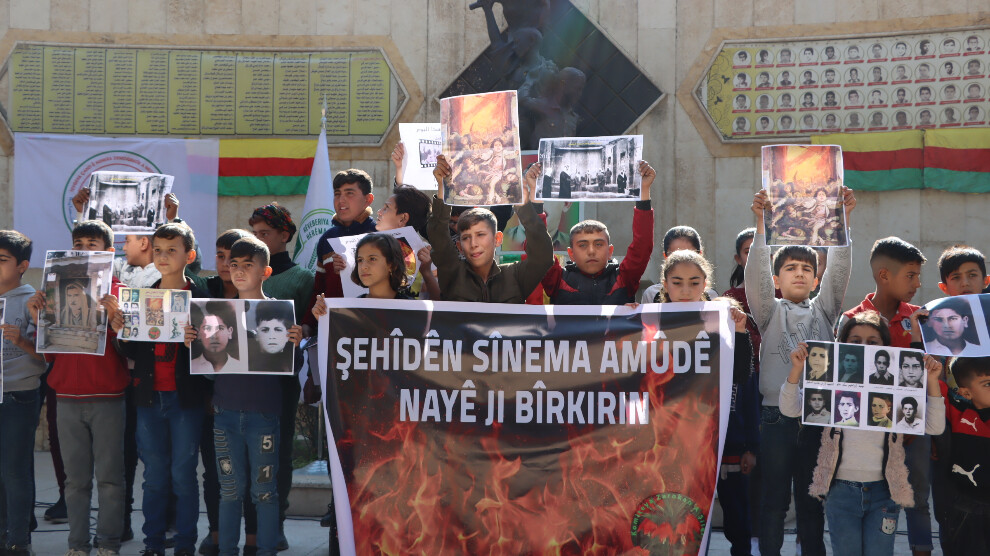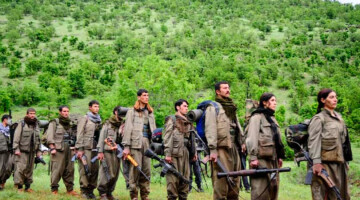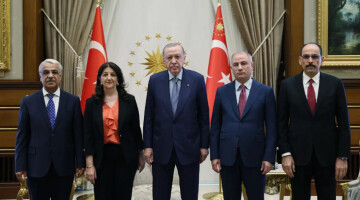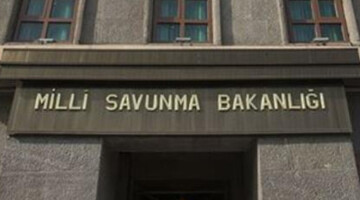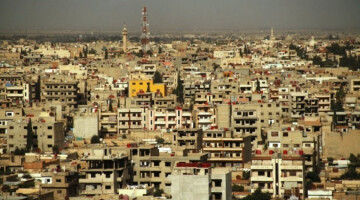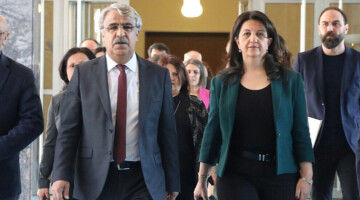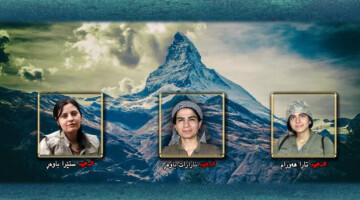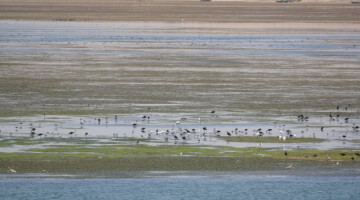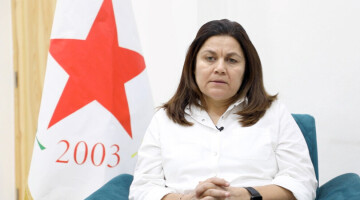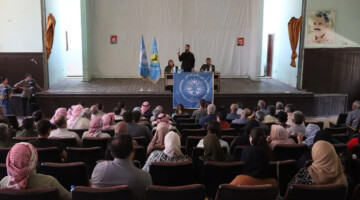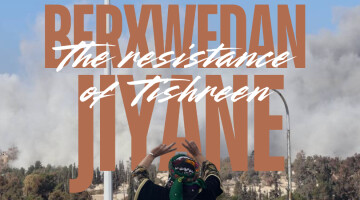Every year, the citizens of Amûdê commemorate the victims of the massacre at the Cinema Martyrs Park, which is built on the site of the massacre.
Dozens of residents, children from the neighborhood and representatives of institutions gathered in the Cinema Martyrs Park to commemorate those who were killed in the massacre.
The ceremony was organized by the Amûdê district council and the Mesopotamia Democratic Culture and Art Movement and Children's Art Committee.
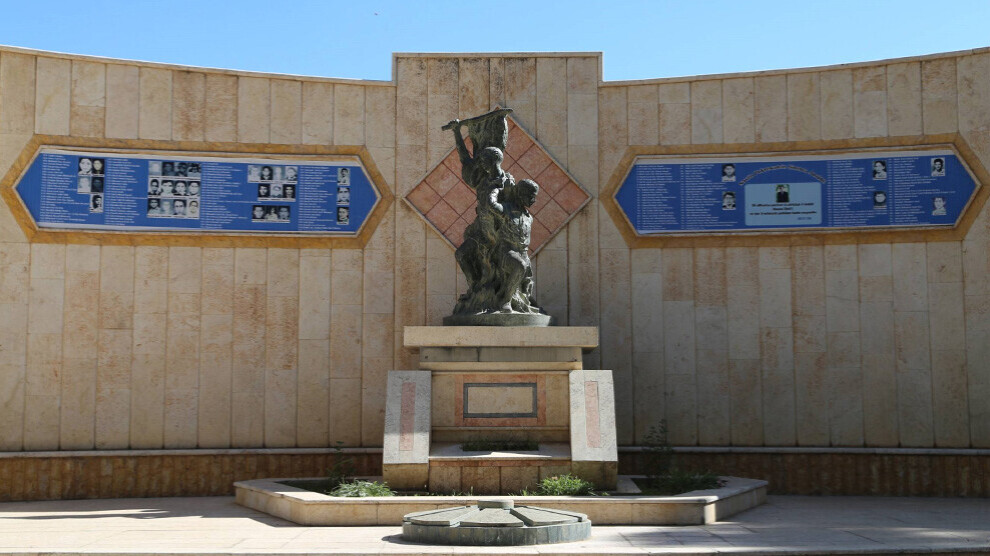
The cinema Amûdê fire
The cinema fire in Amûdê is one of those stories that have become deeply embedded in the memory of Kurdish society. It was November 13, 1960, when hundreds of schoolchildren were forced to watch the Egyptian film "The Midnight Spirit" (Chabah nisf al-layl) on a Sunday in the only cinema in the town in northeastern Syria, the Şehrazad Film House. At the time, the Ba'athist regime had ordered a "week of solidarity" with Algeria's struggle for independence from France and was collecting donations for the "Algerian brothers." In Amûdê, therefore, all students had to go to the cinema, for an entrance fee of thirty piasters.
The film had already been shown several times, and each time the cinema was overcrowded. Actually, it had a maximum of 200 seats on about 130 square meters, but on that day 61 years ago, far more than 400 children sat in the auditorium. Their eyes were staring at the screen, over which a horror film from 1947 flickered, when after a short time it was far too bright. But the brightness was no longer coming from the projector, but from a fire. The flames quickly spread to the wooden roof truss of the hut-like building, which was covered with straw and mud. Within a very short time, the entire movie theater was on fire. Panic broke out as the children tried to reach the exits. However, there were only two narrow doors available, which could only be opened inwards. 282 children between the ages of eight and fourteen died an agonizing death.
Whether the fire was organized by the regime - two Syrian soldiers stood guard at the entrance to the cinema - or overheating due to overuse caused the film's player to suddenly burst into flames is still the subject of speculation today. But the fact that the regime authorities ignored the indications about the fire danger and insisted on the continuation of the film screenings, that not a single teacher was in the hall on the day of the fire and that even the children of the regime officials had not come to watch Midnight Spirit, that the tragedy was never investigated by the Syrian regime, leads many people to this day to assume that the cinema fire in Amûdê was a targeted and deliberate massacre. This is because discrimination against Kurdish culture and language was part of state policy in Syria; political activities were suppressed by force by the regime.
Mohammad Saed Agha Daqqouri, an Arab resident of Amûdê who happened to pass by the burning cinema at the time, was able to rescue between 20 and 30 children from the fire before he himself perished in the flames. The monument erected years later in the Baxçê Pakrewan Memorial Garden on the site of the Şehrazad movie house to commemorate the disaster also tells his story. It was donated by Algeria as an expression of solidarity with the people of Amûdê. As a memorial, there is also a fountain in the garden. Into it had taken refuge the rescued children, who were saved by Mohammad Saed Agha Daqqouri. The pictures of the dead and their stories pave the walls of the memorial site. Hundreds of children's eyes gaze upon the onlookers and admonish.
"The children of Amûdê had to support Algeria not only with money, but also with their burned bodies" - these are words of Reşîdê Fatê. The Kurd, now 73 years old, survived the cinema fire. "I was almost twelve years old and was in fifth grade. I watched the film on one of the balconies in the auditorium. There were hundreds of kids sitting downstairs. It was as if they were going to be crushed at any moment. At some point, it became bright on the screen, the movie stopped. The next moment, there was a very loud noise, as if an airplane was flying low. Immediately after that, it was ablaze," Reşîdê Fatê recalls of November 13, 1960. "I then looked at the children in the lower rows. One by one they fell to the ground, crushed or trampled. They all screamed in panic, trying to reach the doors. I jumped from the balcony and ran to the south exit. But it was locked from the outside. We all pushed against the door with all our strength. After an eternity, it broke away and we rushed outside. Only there did I realize that my feet were burning."

